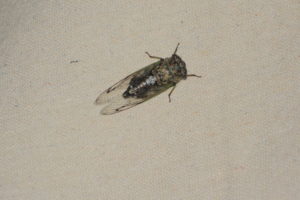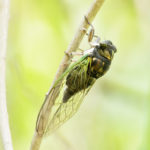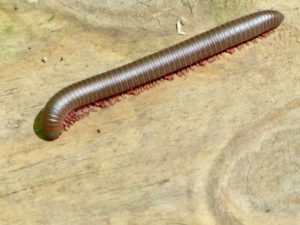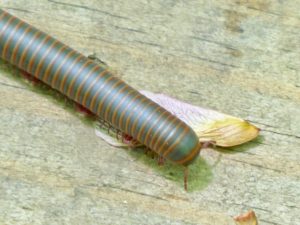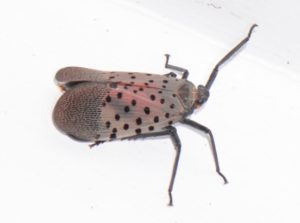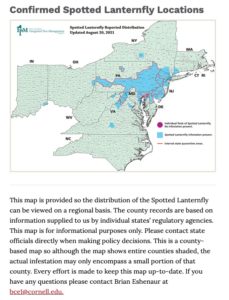Sightings – Other Insects
Observer: Marshall Katler
Observation Date: 7/31/23
Observation TIme: 6:30 p.m.
Observation Location: Mansfield St.
Common Name: Cicada (a.k.a. Dogday Cicada)
Scientific Name: Neotibicen canicularis
Comments: This cicada was just hanging onto a sheet hung outside. It was there from at least late morning to 8:30 PM and longer. It was not there in the morning. It barely moved the entire time it was observed.
One genus of cicadas, the periodical cicadas, spend most of their lives as underground nymphs, emerging only after 13 or 17 years. The unusual duration and timing of their emergence may reduce the number of cicadas lost to predation, both by making them a less reliably available prey (so that any predator who evolved to depend on cicadas for sustenance might starve waiting for their emergence), and by emerging in such huge numbers that they will satiate any remaining predators before losing enough of their number to threaten their survival as a species.
The annual cicadas are species that emerge every year. Though these cicadas have lifecycles that can vary from one to nine or more years as underground larvae, their emergence above ground as adults is not synchronized, so some members of each species appear every year.
Cicadas have been featured in literature since the time of Homer’s Iliad, and as motifs in art from the Chinese Shang dynasty. They have also been used in myth and folklore as symbols of carefree living and immortality. The cicada is also mentioned in Hesiod’s Shield (ll.393–394), its voice sings when millet first ripens. Cicadas are eaten by human beings in various countries, including China, where the nymphs are served deep-fried in Shandong cuisine.
More Information: bugguide.net and Wikipedia
Observer: Josh Simons
Observation Date: 8/13/2016
Observation TIme: 3:00 p.m.
Observation Location: Moose Hill area
Common Name: Cicada (a.k.a. Dogday Cicada)
Scientific Name: Neotibicen canicularis
Comments: One genus, the periodical cicadas, spend most of their lives as underground nymphs, emerging only after 13 or 17 years. The unusual duration and timing of their emergence may reduce the number of cicadas lost to predation, both by making them a less reliably available prey (so that any predator who evolved to depend on cicadas for sustenance might starve waiting for their emergence), and by emerging in such huge numbers that they will satiate any remaining predators before losing enough of their number to threaten their survival as a species.
The annual cicadas are species that emerge every year. Though these cicadas have lifecycles that can vary from one to nine or more years as underground larvae, their emergence above ground as adults is not synchronized, so some members of each species appear every year.
Cicadas have been featured in literature since the time of Homer’s Iliad, and as motifs in art from the Chinese Shang dynasty. They have also been used in myth and folklore as symbols of carefree living and immortality. The cicada is also mentioned in Hesiod’s Shield (ll.393–394), its voice sings when millet first ripens. Cicadas are eaten by human beings in various countries, including China, where the nymphs are served deep-fried in Shandong cuisine.
More Information: bugguide.net and Wikipedia
Observer: Alex Hackman
Observation Date: 4/23/09
Observation Time: 9:45 a.m.
Observation Location: Beaver Brook
Common Name: Mayfly
Scientific Name: Ephemeroptera
Comments: Adult mayfly hatch observed during a paddle up Beaver Brook. This insect is an indicator of good water quality.
More Information: Texas A&M
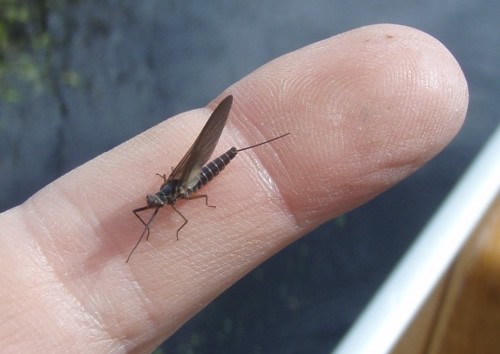
Observer: Paul Lauenstein
Observation Date: 5/27/19
Observation Time: 2:00 p.m.
Observation Location: boardwalk through Conservation land near Morse & Lakeview
Common Name: North American Millipede
Scientific Name: Narceus americanus
Comments: Millipedes first appeared in the fossil record 400 million years ago and are some of the first animals to have lived on land. It is hypothesized that these ancient species are the largest animals without backbones to have walked on earth. Modern forms appear in the late Paleozoic. While North American millipedes are currently classified as diplopods, Linnaeus classified them as apterate insects, Lamarck said they were arachnids, and others have called them worms or crustaceans.
More Information: Animal Diversity Web
Observer: John Baur
Observation Date: 8/7/21
Observation Time: 10:09 p.m.
Observation Location: Old Wolomolopoag Street
Common Name: Spotted Lanternfly
Scientific Name: Lycorma delicatula
Comments: I photographed a Spotted Lanternfly at my garage. I submitted it to iNaturalist. You can see the photo here:https://www.inaturalist.org/observations/90398980. I also reported this invasive pest species to the state.
The Spotted Lanternflyis native to China and was first detected in Pennsylvania in September 2014 (see attached map). If allowed to spread in the United States, this pest could seriously impact the country’s grape, orchard, and logging industries.
More Information: Mass.gov and Massachusetts Introduced Pests Outreach Program and Cornell CALS and National Invasive Species Information Center and Wikipedia

